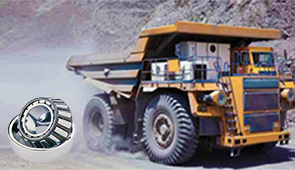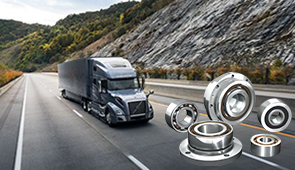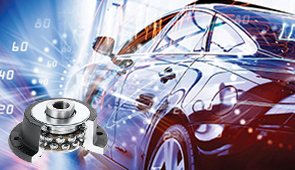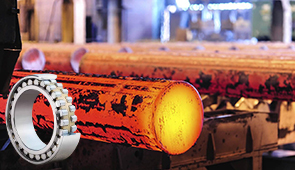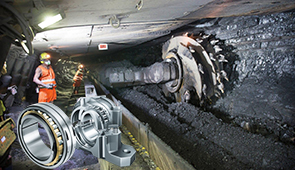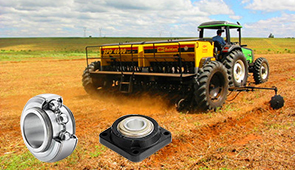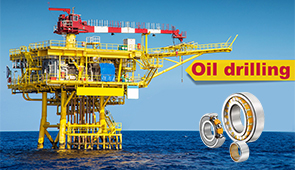Top-Rated Oil Seal Supplier: Your Ultimate Source for Industrial Applications
When it comes to ensuring the reliability and efficiency of industrial machinery, high-quality oil seals are a critical component. Oil seals prevent the leakage of vital lubricants and block harmful contaminants from entering mechanical systems, thereby safeguarding their functionality and extending their operational lifespan. This article will explore the importance of using top-rated oil seals, their applications across various industries, and key factors to consider when selecting the best supplier. Whether you’re in automotive manufacturing, heavy machinery, or another industrial sector, finding the right oil seal supplier plays a vital role in maintaining performance and minimizing downtime.
What types of oil seals are available from reputable suppliers?
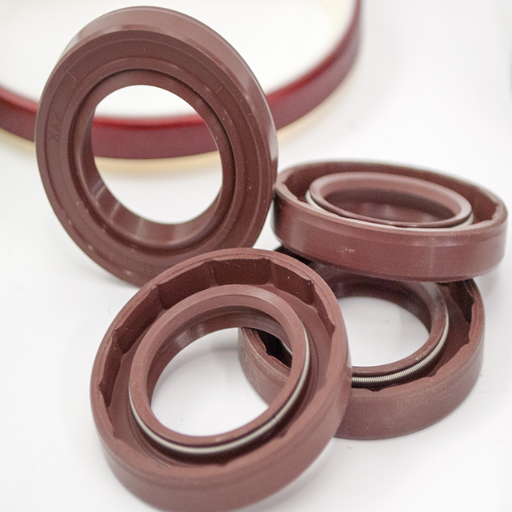
Understanding radial shaft seals and their applications
Radial shaft seals are essential components of machinery and, as such, are very important in containing lubricants and preventing the entry of contaminants dirt, dust, and water into a rotating machine. These seals have an elastomer lip which makes them fit securely and tight to the rotating shaft, along with metallic casing which serves as structural support. Well-known manufacturers produce radial shaft seals from a variety of materials such as Nitrile rubber (NBR), fluorocarbon rubber (FKM), and silicone, depending on the operating conditions.
- Shaft Speed: Normal seals can accommodate speeds of up to ten meters per second. However, high-performance versions can handle up to thirty meters per second and sometimes even more.
- Operating Temperature: FKM functions well at a temperature range of -15°F to 400°F (-25°C to 200°C), while NBR can handle temperatures from -40°F up to 250°F ( -40°C to 120°C).
- Pressure: Specialized designs can endure pressure up to 3MPa, which is required for high-demand applications, while most radial shaft seals accommodate up to 0.3MPa.
- Chemical Compatibility: Chemicals such as oils, fuels, or cleansing agents can be hostile exposure to the environment, which is why the materials selected need to be specifically resistant.
The applications are vast and include but are not limited to automotive engines and gearboxes, industrial pumps, compressors, and aerospace equipment. Seals that are of higher quality ensure longer life and reliability while functioning in critical environments.
Exploring the benefits of double lip oil seals
Double lip oil seals are particularly advantageous in challenging applications necessitating greater sealing effectiveness and durability. Their most distinctive benefit is that in the dual-lip design, the inner lip retains the lubricant while the outer lip seals off contaminants like dust, dirt, and moisture. This ensures excellent performance in harsh conditions.
These seals are typically manufactured from a high-performance material such as nitrile rubber (NBR), fluoroelastomers (FKM), or polytetrafluoroethylene (PTFE) due to their chemical resistance and thermal stability. For instance:
- Temperature Range: NBR performs with moderate effectiveness within -30°C to +120°C, and FKM can operate at higher extremes, more than +200°C.
- Rotational Speed: Depending upon the application, more enhanced designs are capable of sustaining reliable operation at speeds over ten thousand RPM.
- Pressure Tolerance: The NBR double lip oil seals are appropriate for applications within systems that sustain pressure up to 10 PSI, but commercially available variants would be able to sustain higher pressures.
Moreover, by minimizing lubricant seepage as well as blocking contamination ingress, these seals help to cut maintenance requirements and increase the useful life of the equipment. Their field of application covers automotive, aerospace, and industrial machinery, thus emphasizing their versatility and importance in sensitive systems. All these advantages contribute to double lip oil seals being one of the most dependable seals for system integrity and operational reliability.
What materials are commonly used in oil seals for different applications?
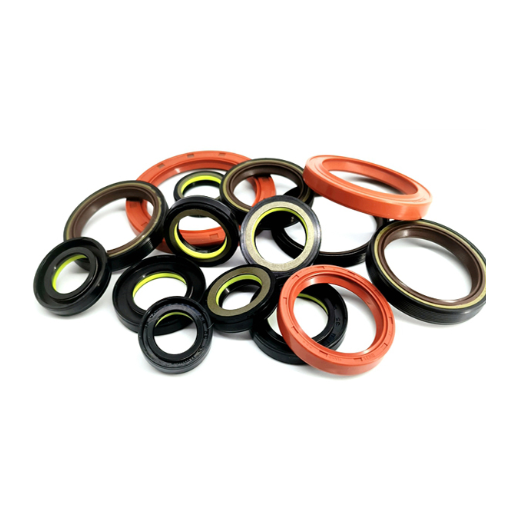
Nitrile rubber seals: Properties and suitable uses
Nitrile rubber (NBR) seals have great acceptance due to their oil, fuel, and some chemical resistance. They are treasured most in places where fluids that stem from oil are common. Some of the properties are high tensile strength, robust wear resistance, and a temperature range of -40°F to 250°F (-40°C to 121°C). These seals are prone to use in automotive engines, hydraulic systems, and industrial machines because of their great lubricative and hydraulic fluid bearing.
- Temperature Range: -40°F to 250°F (-40°C to 121°C) – High and low temperatures do not interfere with the functionality and endurance the rubber is expected to retain.
- Hardness: Normally 70 Shore A – Gives sufficient rigidity while permitting flexibility to serve sealing purposes.
- Chemical Resistance: Great for oils derived from petroleum and aliphatic hydrocarbons – Effectively lengthens the operational existence in systems filled with oil.
- Tensile Strength: 10-15 MPa – Limits the risk of deformation under pressure while promoting durability.
These features make nitrile rubber seals a reliable and inexpensive solution for systems that work under moderate temperatures. In addition to this, systems that require a certain level of chemical resistance can be met. Yet, they cannot withstand use with polar solvents, ozone, and extreme temperatures exceeding the parameters. Fluorocarbon or silicone materials may serve better in these respects.
Polyacrylate seals: When to choose this material
When a system, especially automotive and industrial, requires additional protection against heat and oil, polyacrylate seals are the right choice. Polyacrylate seals work effectively with constant immersion in lubricants, fuels, or high temperatures which makes them suitable for components in automatic transmission systems or engines.
- Temperature range: From -20°C to 150°C (-4°F to 302°F), is reliable in high heat applications.
- Oil resistance: Excellent resistance to petroleum-based oils and fluids is critical to systems with constant lubricant exposure.
- Abrasion resistance: Good wear resistance provides extended life in mechanical systems.
Although these seals are reliable, I would refrain from using them in very low temperatures and environments with oxidizing substances and acids. For such environments, fluorocarbon materials may be more appropriate.
How do oil seals prevent leakage in machinery and automotive applications?
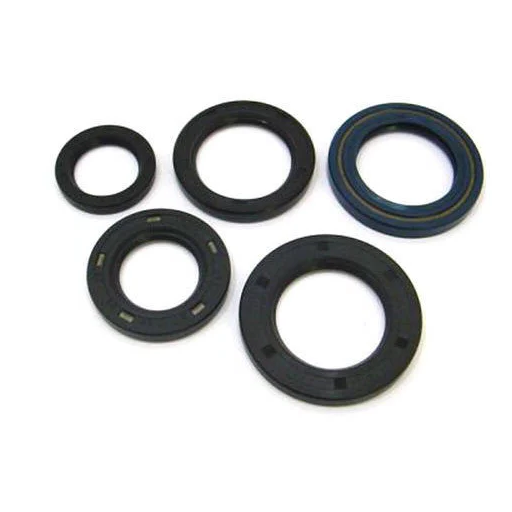
The role of seal lips in maintaining proper lubrication
Seal lips, a type of rotary seal significantly increases effectiveness during assembly and disassembly since no further manipulations or steps would be required to ensure sealing performance is adequate. Such seals significantly reduce the possibility of lubricant escaping while at the same time preventing contaminants such as humidity and dust from entering the lubricated area. The structure is designed in a manner that the lubricant is used during the most effective part thus preventing excessive damages and improving efficiency.
- Lip Contact Pressure: The seal lip must exert a seal with sufficient contact pressure while rotating, which will aid in mitigating the rate of wear. Depending on the application and speed of the shaft, the pressure would range from 0.1 MPa to 0.5 MPa.
- Material Thermal Resistance: Depending on the application, a seal must be able to endure high operating temperatures. For general purposes, the range is between 120°C, while in extreme applications it can go over 200°C. For these extreme conditions, silicone or fluorocarbon-based seals are more suitable.
- Surface Roughness of Shaft: To seal effectively while keeping friction in check, Ra roughness should be between 0.2 and 0.8 µm.
- Shaft Rotational Speed: In some cases, seals are exposed to extreme speeds of rotation where they have to function without the worry of being damaged. These speeds can go up to 10,000 RP.
Considering these factors, well-designed seal lips would guarantee that machinery and vehicles retain their lubricant while functioning optimally for an extended period.
Preventing contaminant ingress with effective sealing elements
To impede contaminant ingress, several design and operational considerations must be taken into account. These considerations guarantee that the sealing components serve a variety of purposes without compromising the system’s integrity.
- Material Selection: Select sealing materials that can tolerate a great deal of the environment’s severe conditions, such as abrasion, chemical reactions, or corrosion. Case in point, for oil Nitrile Rubber (NBR), is for high temperatures, and foil elastomers (FKM) are ideal for oils and chemical exposure.
- Seal Design Geometry: Incorporate advanced lip profiles such as dual or multi-lip seals, particularly suited for debris-laden environments, which improve barrier effectiveness and lubrication retention. Labyrinth seals and radial lip designs are effective for particulates and debris-prone environments.
- Seal Surface Interface: The surface finish of the area where the seal meets the shaft should be optimized. A Ra roughness between 0.2 and 0.8 µm provides for an optimal sealing interface and minimizes wear.
- Operating Temperature Range: Choose effective operating temperature range seals best suited for the particular machinery. A good example here would be standard NBR works from -40°F to 250°F (-40°C to 121°C) and FKM’s application optimum is much broader, from -5°F to 400°F (-20°C to 200°C).
- Drainage Contaminants from the Systems: Include drain grooves or dust lips designs that have a high capacity for redirecting contaminants from the sealing interface. This translates to fewer harmful contaminants building up, which means seals are not overly damaged.
- Tolerance with Pressure: Determine seal pressure ability and make sure it matches the application’s needs. An example is seals meant for hydraulic systems needing up to 10 MPa or 1450 psi pressure without any changes in form or leaks.
- Rotary and Speed Restriction: Seal performance operational speeds should be selected carefully. When shaft speeds are higher, contamination seals for dynamic applications where the speed of rotation is up to 10,000 RPM are used in the form of contaminator shields for better seal performance.
Resolving these technical requirements in a logical order reduces the likelihood of failure from contaminant ingress which would help enable machinery to work reliably and durably for optimal performance.
What are the latest innovations in oil seal technology?
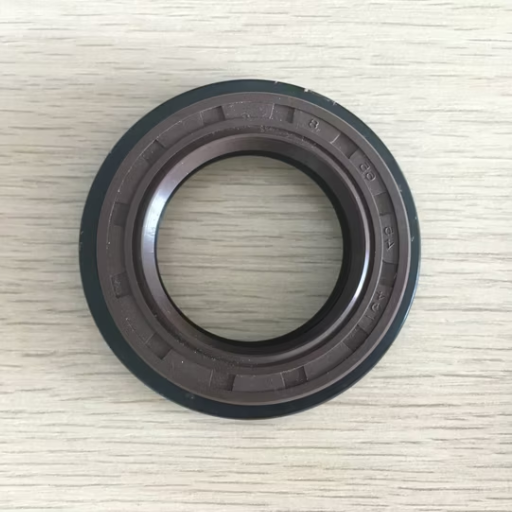
Advancements in seal materials for improved durability
About seal materials, claims of progression made in these elastomer blends indicate that durability is still a focal point of innovation. I will outline a couple of advancements I have made oversights at:
- Nanoparticles: The new high-performance elastomers, such as hydrogenated nitrile butadiene rubber (HNBR) blended with fluoroelastomers (FKM), increase resistance to extremes in temperature as well as chemical corrosion. Continuous immersion in oils, fuels, or other aggressive substances is also not an issue for these materials.
- Filled Polymers: Toughened PTFE (polytetrafluoroethylene) or thermoplastics composites have been designed to withstand higher pressures along with moderately abrasive conditions. Worn parts guarantee long operational lifespans within strenuous conditions, and are therefore ideal for use in hydraulic systems or heavy-duty machinery.
- Stiffened Thermal Alloys: It is possible to improvise seal designs that incorporate metal or alloy constituents. Such seals ensure better thermal stability, which is crucial when working at higher velocity with increased heat, such as 180 degrees Celsius. This guarantees the seal remains effective during high temperatures without changing dimensions or undergoing polymeric degradation.
- Wear Resistant Coatings: Advanced nanostructured coatings from coaters, designed to decrease friction and improve seal material resistance to wear, have proven extremely valuable. This directly correlates with longer maintenance intervals of mechanical devices and effortless energetic efficiency.
Using these material advancements, seals can retain their functional integrity over a wide temperature range, high pressures, and during exposure to corrosive chemicals, which in turn increases the equipment’s life and reliability.
Smart seals: Integrating sensors for predictive maintenance
The incorporation of sensors directly into seals offers an innovative method for available real-time monitoring and predictive maintenance. The integration of advanced sensing technologies, for example, pressure, temperature, and vibration sensors, directly within the seal structure enables the collection and transmission of pertinent operational data continuously. The analysis of this data enables the determination of hiring conditions that signal the onset of abnormal operations, thus facilitating the early address of detected risks.
For example, seal temperature assessment can be done by temperature sensors while fluid pressure sensors display vital information regarding the flows within the system. Vibration sensors can detect excessive wear and misalignment that can lead to mechanical failure.
- Pressure Measurement: Sensors designed for hydraulic and pneumatic systems can detect system faults between the ranges of 0 to 10,000 psi.
- Temperature Measurement: Industrial temperature sensors able to measure between -40°C to 200°C are utilized as they can function within a large window.
- Vibration Sensitivity: Early indicators of mechanical failure can be detected by high-sensitivity accelerometers calibrated to recognize 0.01 g vibrations.
These smart seals enable the prediction of when maintenance may be required by monitoring for situations that are deemed functional risks. This leads to reduced unanticipated work stoppages, increased work safety, increased durability of the machines, and more efficient targeting of repairs.
How do I maintain and replace oil seals for optimal performance?
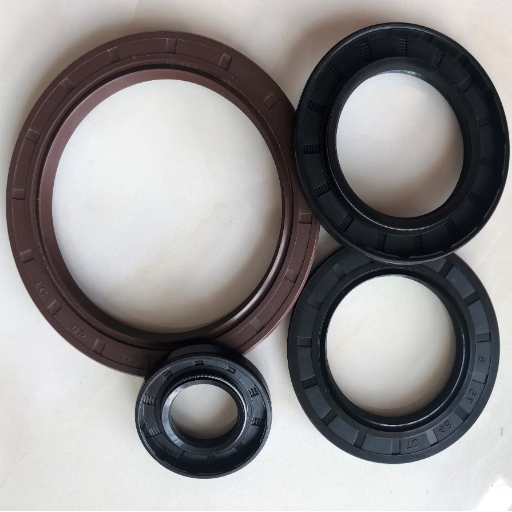
Signs of oil seal wear and when to replace them
In observing the signs of oil seal wear, the following indicators would be noteworthy:
- Oil Loss: Seals could suggest that the sealing edge is damaged or worn down. Leakage of oil from the seal is usually caused by contamination or aging of the seal.
- Surface Damage: Worn-out surfaces further indicate the seal’s ineffectiveness. Examination revealing hardening, deformation, or cracking would suggest the seal material has been damaged.
- High-Frequency Movement: An excess in abnormal vibrations, which would ultimately misalign the seal, would result in large amounts of abnormal machine vibration. I would utilize my calibration for vibration sensitivity, previously set to 0.01 g.
- Decreasing Temperature: Excessive wear or thermal damage is expected when the oil seal’s upper operational temperature is massively exceeded. For most industrial seals, the typical range is within -40° to 200°C.
If performance pressures up to 10,000 psi drop alongside these other documented signs, then I proactively replace seals to keep the seal at maximum machine efficiency. Eliminating the seals allows the machine to function with improved safety.
Best practices for oil seal installation and maintenance
Whenever I place the oil seals, I make sure that the shaft is completely cleaned from any dust, wastage, scratches, or any form of particles that could damage the seal. Make sure that the seal is not distorted which could result in unintended erosion. Always use the proper guides and tools for placement like a seal driver or seal mandrel.
On regular maintenance inspections, I check for a wide array of symptoms like cracking, hardening, or even unexpected deformation. I keep a keen eye on the working conditions, especially the pressures and temperatures to ensure they are within the range specified for the seal. For instance, most industrial oil seals have a maximum pressure rating of 10,000 psi and temperature range within -40°C to 200°C.
When there are sudden and minute order vibrations or misalignment which I suspect are due to high frequency movement, I can set the vibration calibration on detection settings for abnormality which are as fine as 0.01 g. Any deviation, detected or not, will cause readjustments or even replacements to be performed immediately to maintain both the efficiency and safety of the system. This way, the performance and lifespan of oil seals can be achieved, making sure that they can perform reliably.
Frequently Asked Questions (FAQs)
Q: What types of oil seals do top-rated seal manufacturers offer?
A: Top-rated oil seal manufacturers offer a wide range of products, including rotary shaft seals, hydraulic seals, and mechanical seals. These seals are used in various industrial applications and are often referred to as shaft seals. Oil seals are made from high-quality materials such as rubber, polytetrafluoroethylene (PTFE), and other elastomers to ensure durability and performance.
Q: How do I choose the right oil seal supplier for my industrial applications?
A: When selecting an oil seal supplier, consider factors such as the company’s reputation, product quality, range of seal products offered, and expertise in sealing solutions. Look for a supplier that specializes in oil seals and has experience in your specific industry. Trusted suppliers like NOK Corporation or Garlock are known for their high-quality materials and reliable seals used in various industrial applications.
Q: What are the main applications for hydraulic seals?
A: Hydraulic seals are widely used in hydraulic systems and cylinders across various industries. They are essential components in equipment such as construction machinery, agricultural equipment, and manufacturing plants. Hydraulic seals help maintain pressure, prevent leakage, and ensure the smooth operation of hydraulic cylinders and other fluid power systems.
Q: What factors should I consider when selecting a mechanical seal for my application?
A: When choosing a mechanical seal, consider factors such as the operating conditions (temperature, pressure, and media), shaft surface speed, and compatibility with the materials used in your system. It’s important to work with a reputable seal manufacturer who can guide in selecting the right mechanical seal for your specific industrial application.
Q: How are oil seals used in industrial applications?
A: Oil seals are used in various industrial applications to prevent leakage of lubricants, oils, and other fluids while also keeping contaminants out of machinery. They are commonly found in automotive engines, gearboxes, pumps, and industrial equipment. Oil seals are the most widely used type of dynamic seals, helping to maintain the efficiency and longevity of mechanical systems.
Q: What materials are commonly used in the production of oil seals?
A: Oil seals are made from a variety of materials, depending on the specific application requirements. Common materials include nitrile rubber (NBR), fluoroelastomer (FKM), silicone, polyacrylate, and PTFE. These materials are chosen for their resistance to heat, chemicals, and wear. The selection of oil seal materials depends on factors such as operating temperature, chemical compatibility, and durability needs.
Q: How do I ensure I’m getting high-quality seals from an oil seal factory?
A: To ensure you’re getting high-quality seals, work with a reputable oil seal manufacturer or supplier known for their quality control processes. Look for factories that use high-quality materials and adhere to industry standards. Request product specifications, certifications, and testing data. Additionally, consider suppliers who offer custom sealing solutions and have a track record of serving various industrial applications successfully.
Q: What are the advantages of working with a specialized oil seal supplier?
A: Working with a specialized oil seal supplier offers several advantages. These include access to a wide range of seal products, expert knowledge of sealing technologies, custom solutions for specific applications, and technical support. A specialized supplier can help you select the right seals for your needs, ensuring optimal performance and longevity in your industrial applications.
UCTH213-40J-300 with Setscrew(inch)
CNSORDERNO: Normal-duty(2)
TOGN: UCTH213-40J-300
SDI: B-R1/8
SD: 2 1/2
UCTH212-39J-300 with Setscrew(inch)
CNSORDERNO: Normal-duty(2)
TOGN: UCTH212-39J-300
SDI: B-R1/8
SD: 2 7/16
UCTH212-38J-300 with Setscrew(inch)
CNSORDERNO: Normal-duty(2)
TOGN: UCTH212-38J-300
SDI: B-R1/8
SD: 2 3/8
UCTH212-36J-300 with Setscrew(inch)
CNSORDERNO: Normal-duty(2)
TOGN: UCTH212-36J-300
SDI: B-R1/8
SD: 2 1/4
UCTH211-35J-300 with Setscrew(inch)
CNSORDERNO: Normal-duty(2)
TOGN: UCTH211-35J-300
SDI: B-R1/8
SD: 2 3/16
UCTH211-34J-300 with Setscrew(inch)
CNSORDERNO: Normal-duty(2)
TOGN: UCTH211-34J-300
SDI: B-R1/8
SD: 2 1/8









